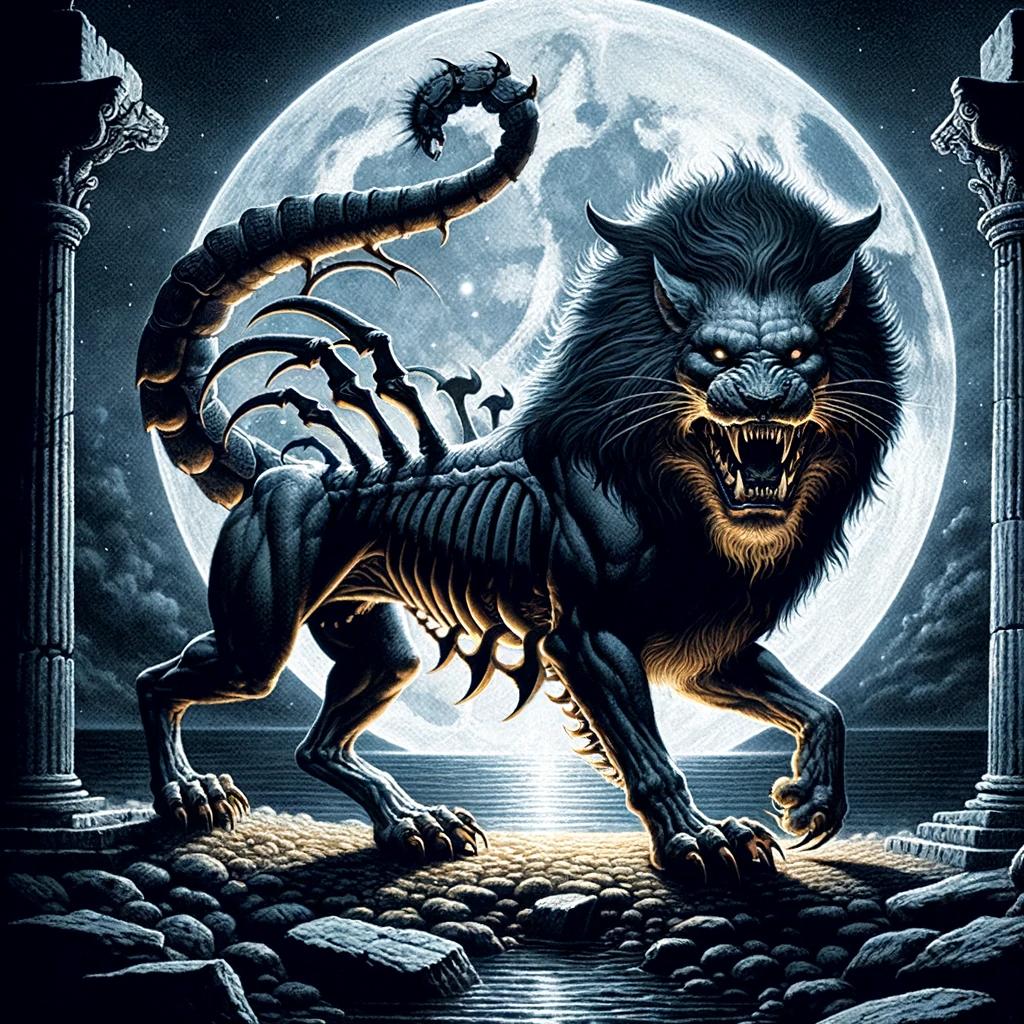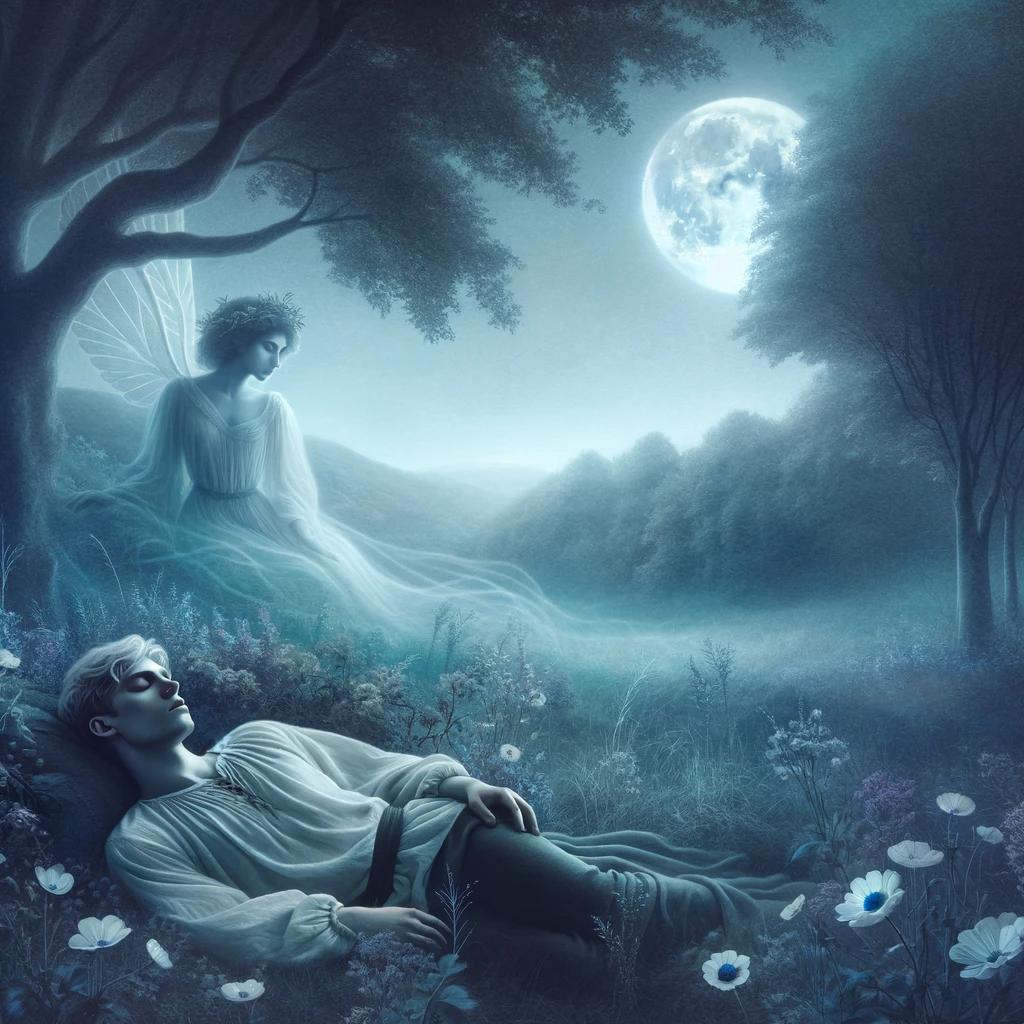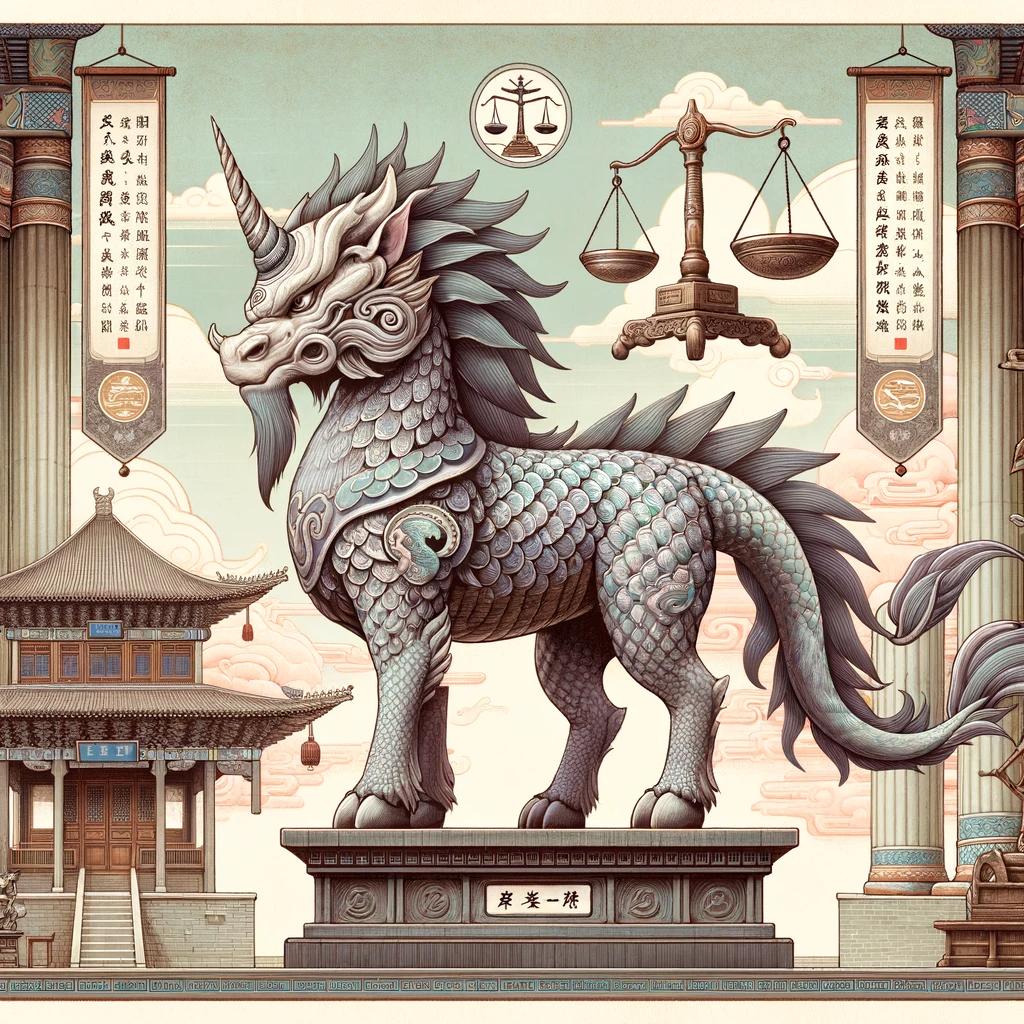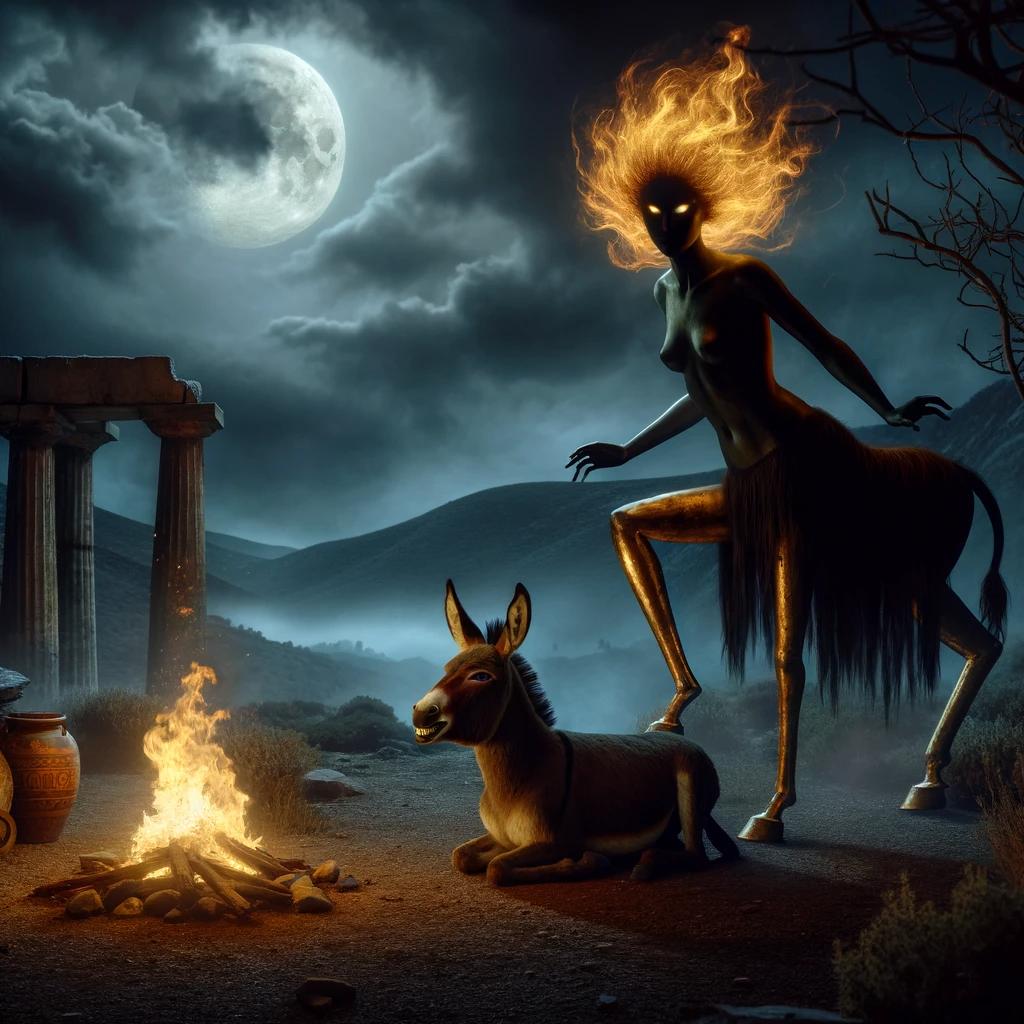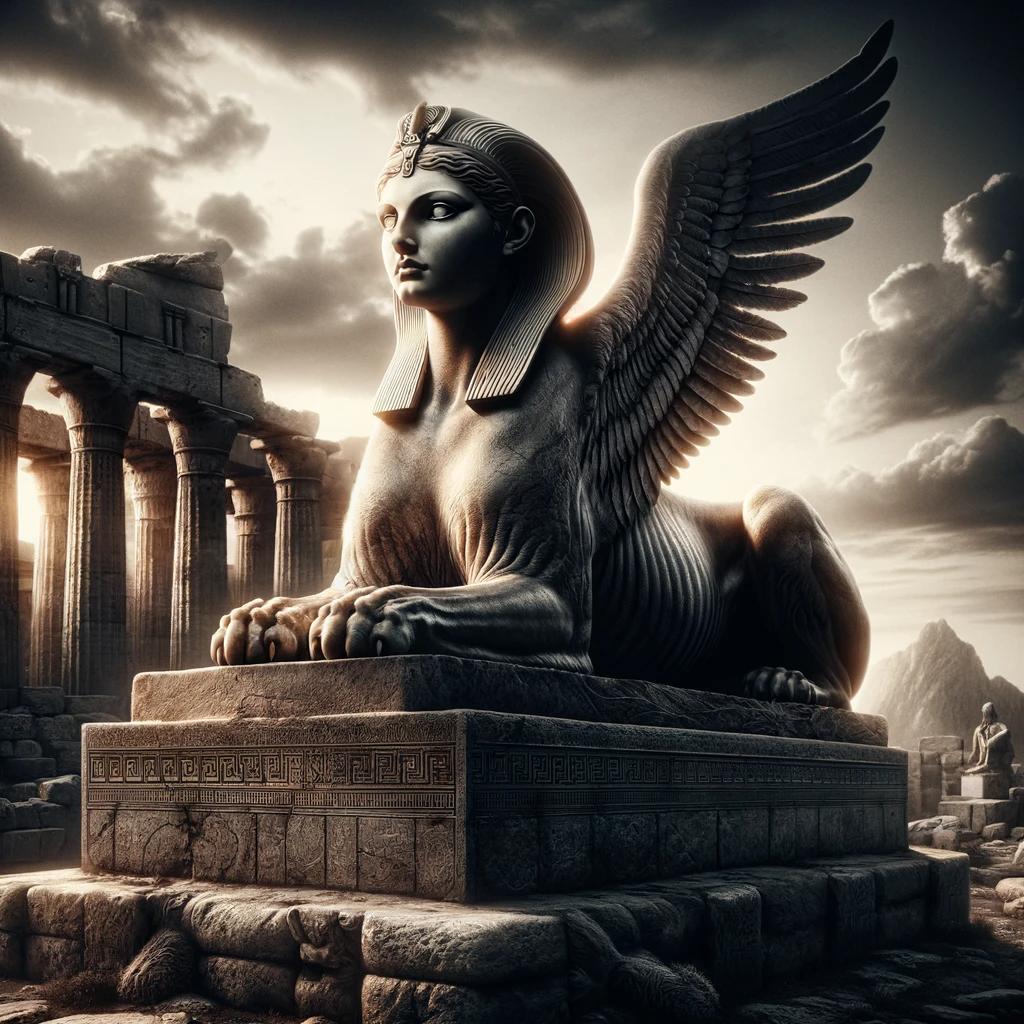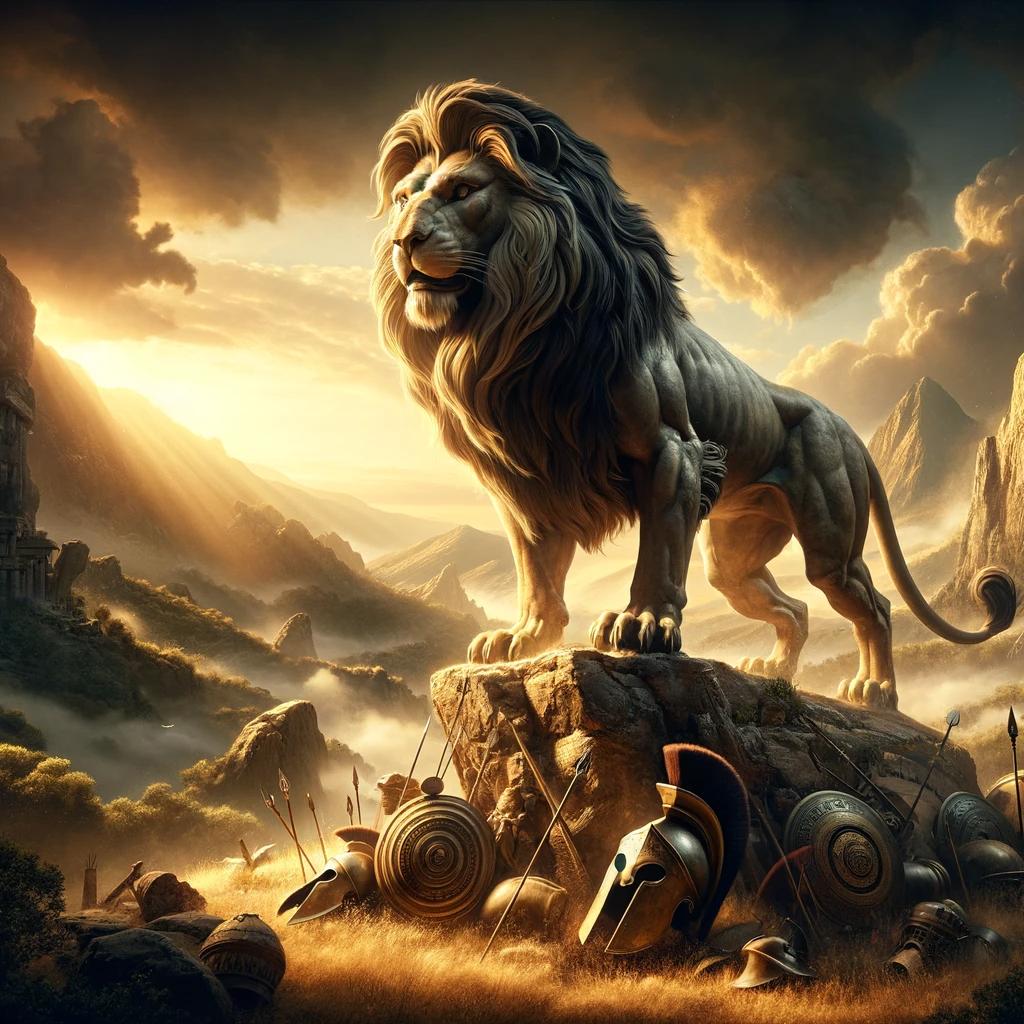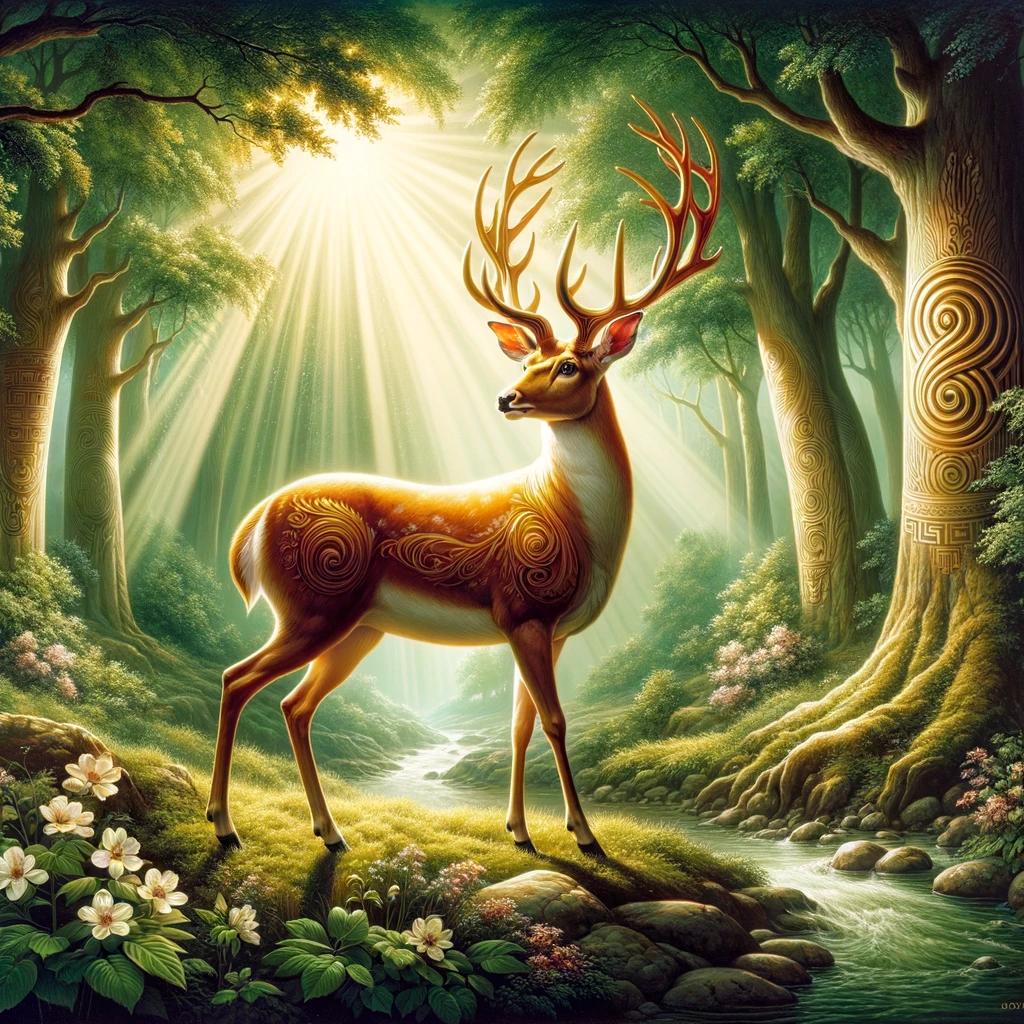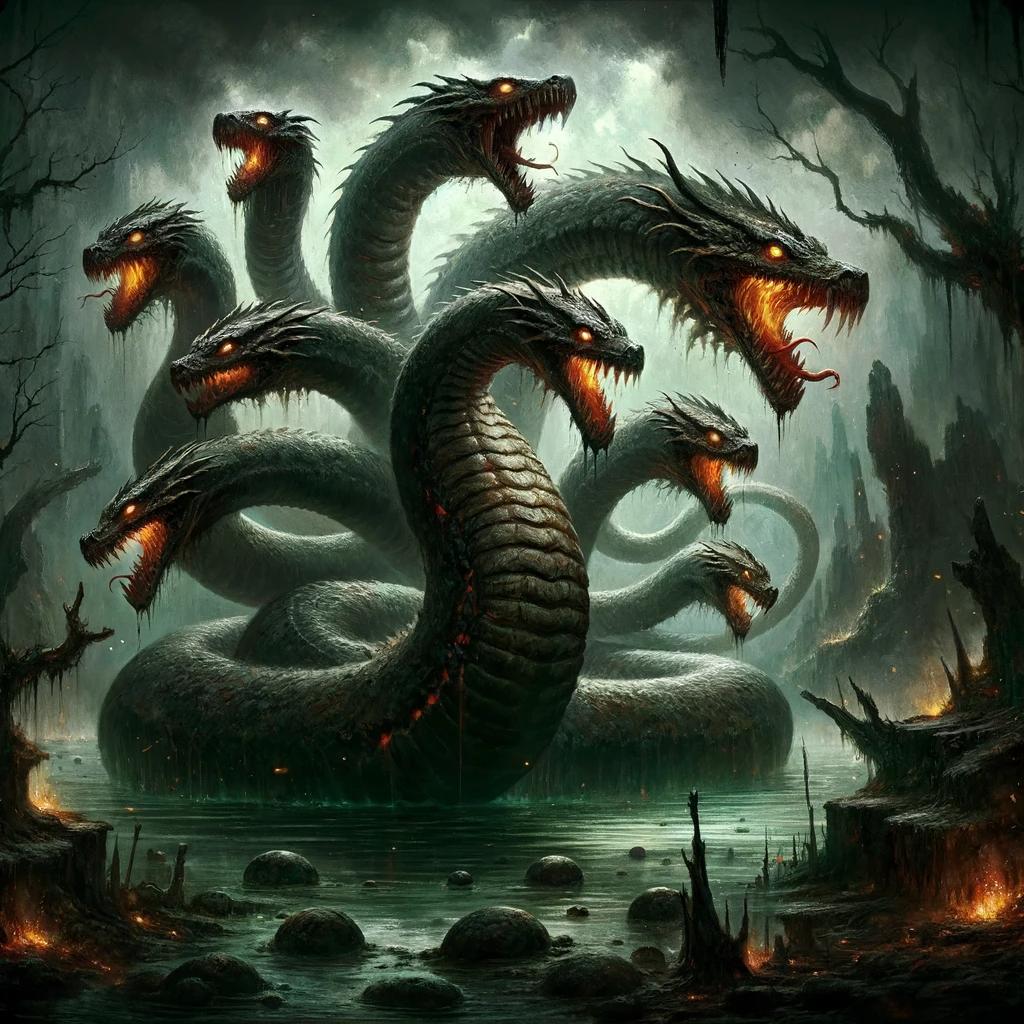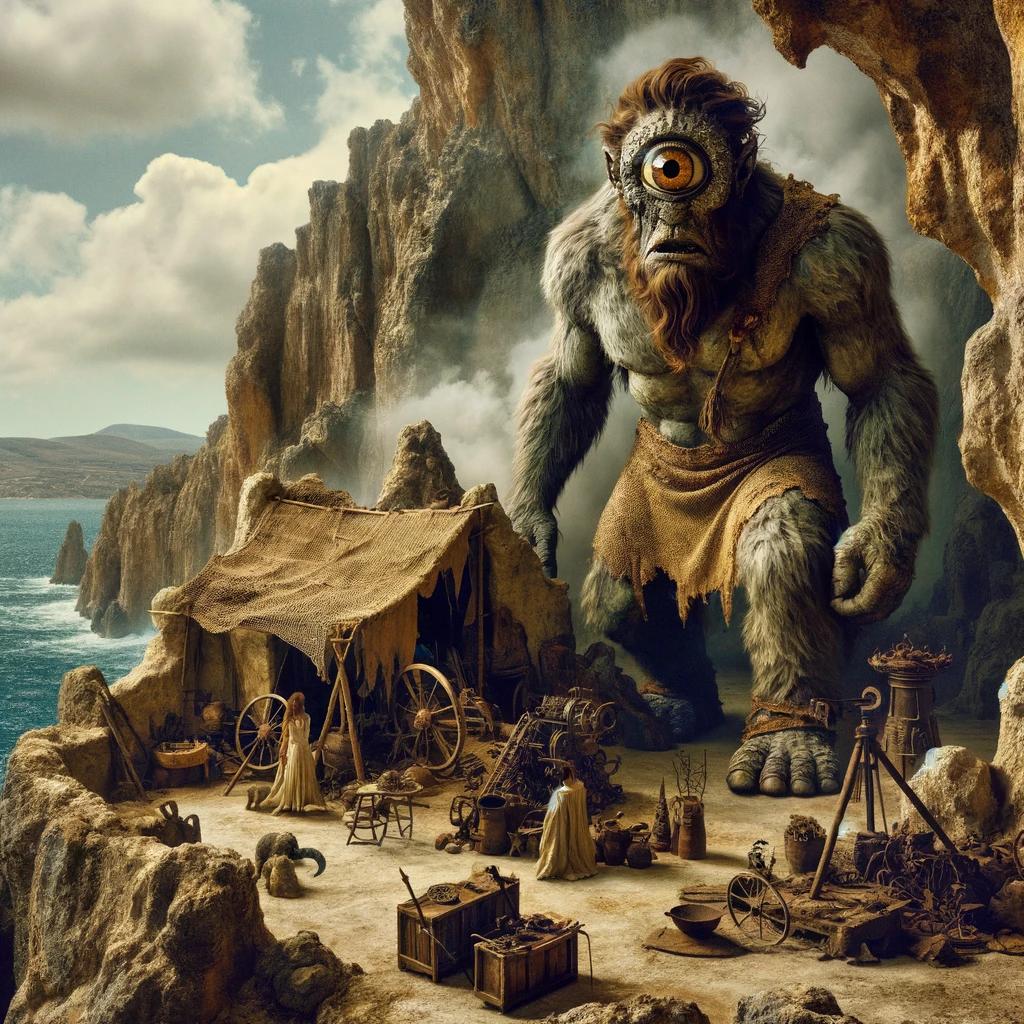The Enigmatic Manticore: Symbolism and Mythology Explored
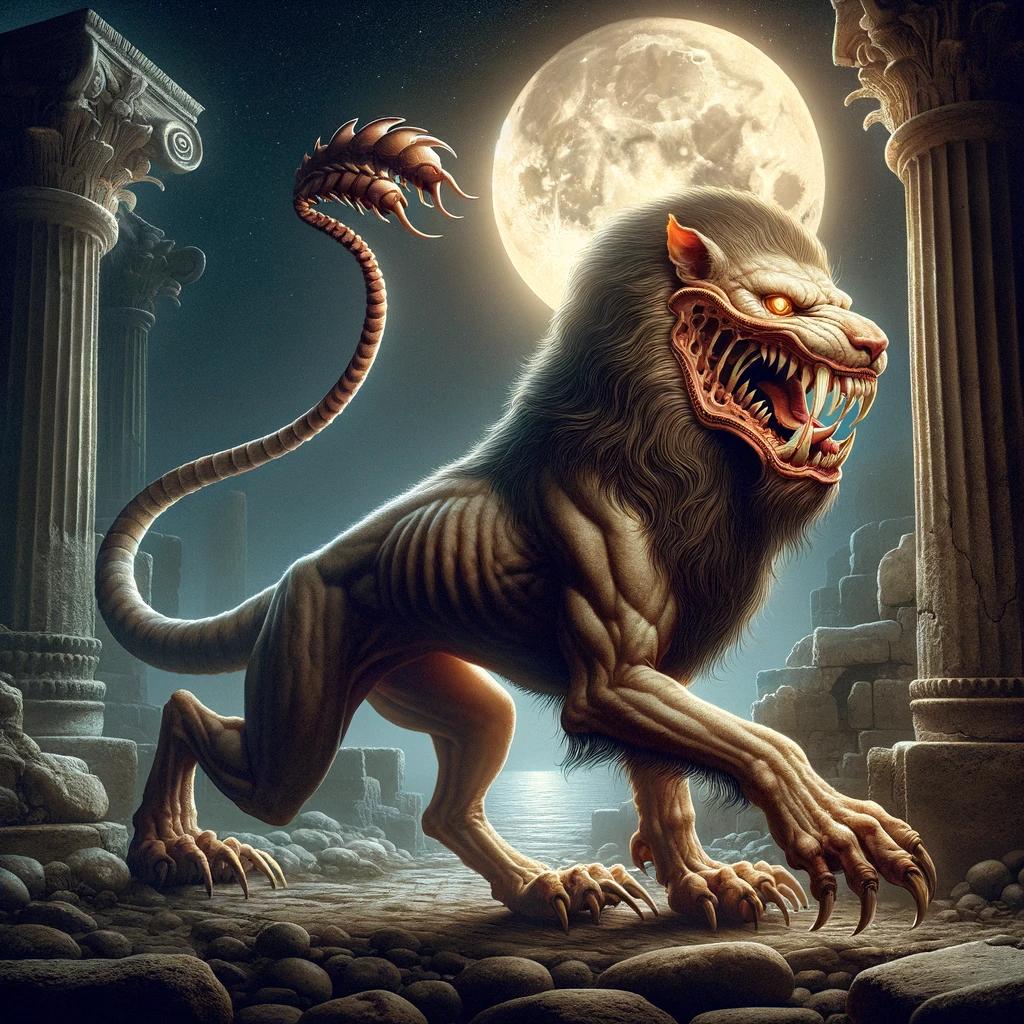
The Manticore, a legendary creature from Greek mythology, is a fascinating hybrid with the head of a human, body of a lion, and a scorpion tail. This mythical being holds cultural significance in Persian, Egyptian, and Greek mythologies, embodying various aspects of manticore mythology, including its distinctive lion head scorpion tail feature.
In medieval bestiaries and art, the manticore was depicted with unique features such as paws, teeth, and fur. This article explores the origins, characteristics, and representations of the manticore, its comparisons with other mythical creatures like the chimera, and its role in popular culture and literature, including works like “The Manticore” by Robertson Davies and its appearances in the Percy Jackson series, highlighting the manticore Percy Jackson connection.
Overview of Manticore Greek Mythology
The Manticore is a captivating creature deeply rooted in Greek mythology, renowned for its unique and captivating appearance. This mythical creature, often described as a lion with a scorpion tail, is depicted as having the head of a human, the body of a lion, and a tail resembling that of a scorpion, encompassing the essence of what is a manticore.
The Manticore holds cultural significance across various civilizations, including Persian, Egyptian, and Greek cultures, often symbolizing the power and the duality of nature through its manticore symbolism.
The Manticore’s origins and cultural significance are diverse and intriguing.
In Persian and Egyptian mythologies, the Manticore’s presence is prominent, with tales and legends portraying its power and ferocity.
In Greek mythology, the Manticore assumes a significant role, often associated with warrior heroes and mythical beasts, marking its place among the revered greek mythology creatures.
Exploring the Manticore’s description and characteristics provides additional insight into the creature’s allure.
With its striking appearance, the manticore creature exhibits a human-like head, a majestic lion body, and a tail adorned with venomous spikes resembling those of a scorpion. Further unique features include its paws, teeth, and fur, which add to the mystery and allure of this legendary creature, often referred to as a mythical manticore.
While the Manticore and Chimera share resemblances, they possess distinct qualities that set them apart. The manticore vs chimera comparison delves deeper into this mythical contrast, shedding light on the unique attributes and symbolism associated with each creature.
The Manticore’s influence extends beyond ancient mythology, reaching into modern popular culture and literature. Notably, the Manticore is prominently featured in the Percy Jackson series, where its association with the goddess Artemis and its relationship with the formidable Echidna are explored, further establishing the Percy Jackson manticore narrative.
The Manticore’s presence in medieval bestiaries and art further showcases its enduring legacy. Illuminated manuscripts depict the Manticore in various forms, allowing us to glimpse the diverse interpretations and symbolism attributed to this mythical creature throughout history.
Historical references and accounts shed light on the Manticore’s early mentions, including Ctesias’ contribution to its recognition and its subsequent misinterpretations. These accounts contribute to a more comprehensive understanding of the rich history surrounding the Manticore, enriching our perception of the mythical manticore.
Modern literature, such as Robertson Davies’ novel ‘The Manticore,’ demonstrates the enduring fascination with this mythical creature. The Manticore is also a recurring figure in modern fantasy and gaming, captivating audiences with its legendary status and the intriguing question of manticore meaning.
As we explore the realm of Manticore Greek mythology, we embark on a journey uncovering the ancient origins, cultural significance, distinct characteristics, and enduring influence of this captivating creature.
Origins and Cultural Significance of the Manticore
The origins of the manticore can be traced back to Persian and Egyptian mythology, where it held significant cultural significance. In Persian mythology, the manticore was believed to be a fearsome creature known as the “devourer of men.”
Its name, derived from the ancient Persian language, reflected its reputation as a predator that consumed its victims whole.
Persian and Egyptian Mythology
In Persian mythology, the manticore was often associated with evil and considered a symbol of darkness and destruction. It was believed to possess supernatural abilities such as launching venomous spines and leaping great distances, allowing it to hunt down its prey with ease.
In Egyptian mythology, the manticore also held a prominent place. It was regarded as a guardian creature, protecting sacred places and treasures. The manticore was often depicted on ancient Egyptian artifacts, demonstrating its cultural significance during that time.
Influence in Greek Mythology
Although the manticore originated from Persian and Egyptian mythology, its influence extended to Greek mythology as well. The Greek adaptation of the manticore drew inspiration from the encounters between Greeks and Persians during the ancient wars, resulting in the assimilation of various mythical creatures into Greek culture.
In Greek mythology, the manticore was often associated with the goddess Artemis, known as the protector of wildlife and nature. It is believed that the manticore served as a companion or guardian for Artemis, embodying her fierce and untamed nature.
Furthermore, the manticore’s presence in Greek mythology showcased the intertwining of various mythological traditions across different cultures and their impact on ancient Greek narratives and artistic representations.
- In Persian mythology, the manticore was feared as a predator that devoured its victims whole.
- In Egyptian mythology, the manticore held a role as a guardian creature.
- The manticore’s influence extended to Greek mythology, where it became associated with the goddess Artemis.
- The assimilation of various mythical creatures into Greek culture reflected the encounters between Greeks and Persians.
Description and Characteristics of the Manticore
The Manticore, a legendary creature from Greek mythology, possesses distinct physical attributes and traits that set it apart.
With a unique combination of human, lion, and scorpion elements, the Manticore embodies an intriguing blend of ferocity and mystery.
Human Head, Lion Body, and Scorpion Tail
The Manticore boasts a fearsome appearance, with the head of a human, reflecting its origins in Persian and Egyptian mythologies. The body resembles that of a powerful lion, exuding strength and dominance.
This tail enables the Manticore to effectively engage and neutralize its prey, embodying the essence of a man-eating beast with unparalleled prowess.
Paws, Teeth, and Fur
Adding to its formidable aura, the Manticore possesses distinctive characteristics beyond its hybrid form. It exhibits claws and powerful paws, enabling it to grasp its prey with precision and strength. With three rows of sharp teeth, the Manticore’s bite is both terrifying and lethal, cementing its status as a formidable predator in the annals of mythology.
“`
Furthermore, its fur, depicted in various colors such as red, brown, or blue, enhances its allure and mythical presence. While some portrayals depict a tail tipped with pointed spikes, others illustrate it covered in sharp quills, adding to its offensive arsenal.
Intriguing and awe-inspiring, the Manticore’s unique combination of human, lion, and scorpion features captivates imaginations and leaves an indelible mark on the tapestry of Greek mythology.
Manticore vs. Chimera: A Mythical Comparison
When exploring the realm of mythical creatures, it is fascinating to draw comparisons between different beings that capture our imagination.
One such intriguing comparison can be made between the Manticore and the Chimera. Each creature possesses its own distinct characteristics and origins, making them unique in their own right.
- Origins and Legends: The Manticore, as previously discussed, finds its roots in Persian and Egyptian mythology.
It is often depicted as a creature with the head of a human, body of a lion, and a scorpion tail. In contrast, the Chimera originates from Greek mythology and is portrayed as a fire-breathing creature with the head of a lion, body of a goat, and tail of a serpent.
- Symbolism and Significance: Both the Manticore and the Chimera have held significant symbolism in various cultures throughout history.
The Manticore, known for its fearsome appearance and predatory nature, often represents danger and the primal instincts within us. On the other hand, the Chimera, with its hybrid form, represents the combination of different elements and the concept of duality.
- Characteristics and Abilities: While the Manticore possesses paws, teeth, and fur resembling that of a lion, the Chimera boasts unique attributes such as its goat-like body and serpent tail.
Additionally, the Manticore is said to have the ability to launch venomous spikes from its tail, while the Chimera’s fiery breath is one of its most notable abilities.
- Popularity and Cultural References: Both the Manticore and the Chimera have left their mark on various forms of art, literature, and popular culture.
They have been depicted in ancient and medieval artwork, referenced in classical texts, and even made appearances in modern fantasy novels and gaming.
While distinct in their respective mythologies and representations, the Manticore and the Chimera share a common thread as captivating mythical creatures that continue to capture the human imagination.
Exploring their origins, characteristics, and cultural significance allows us to delve into the rich tapestry of mythical beings that have fascinated us throughout history.
Manticore and the Goddess Artemis in Percy Jackson Series
In the popular Percy Jackson series, the mythical creature known as the manticore plays a significant role in relation to the goddess Artemis. In the books written by Rick Riordan, the manticore is portrayed as a fearsome creature, often serving as an antagonist.
As the goddess of the hunt, Artemis has a close connection to creatures of the wild. In the context of the series, the manticore serves as one of Artemis’ adversaries, challenging the heroes in their quests.
Its deadly nature and formidable abilities make it a formidable opponent for the protagonists to overcome.
The encounters between the manticore and the heroes under the guidance of Artemis provide thrilling and suspenseful moments in the story.
The manticore’s association with the goddess emphasizes its significance within the Greek mythological world presented in the series.
Throughout the books, the manticore and Artemis’ connection showcases the battles between mortals and mythical beings, illustrating the ongoing conflict between the forces of good and evil.
The manticore’s presence adds an element of danger and excitement to the narrative, testing the heroes’ bravery and ingenuity in their quest to fulfill their objectives.
Readers of the Percy Jackson series are captivated by the dynamic between the manticore and Artemis, eagerly following the heroes’ battles against this fearsome creature.
The intertwining of Greek mythology with the characters’ adventures creates an engaging and immersive reading experience.
Relationship between Manticore and Echidna in Percy Jackson Series
In the Percy Jackson series, the relationship between the Manticore and Echidna is quite intriguing. Echidna, known as the “Mother of Monsters” in Greek mythology, is portrayed as the mother of the Manticore in these books.
This connection adds an extra layer of complexity to the Manticore’s character and origins.
Echidna herself is a powerful and notorious figure, often depicted as a half-woman, half-serpent creature. She is believed to have spawned numerous monstrous offspring, including the Chimera, Sphinx, and Hydra, among others.
In the Percy Jackson series, Echidna is depicted as an ancient immortal with immense power.
The relationship between the Manticore and Echidna is explored in the context of their shared bloodline and the family dynamics within the world of Greek mythology.
Although the exact nature of their relationship may vary in different versions of the myth, their connection remains prominent in the Percy Jackson books.
Being the offspring of Echidna, the Manticore inherits some of her traits and characteristics.
This includes its fierce and predatory nature, as well as its formidable physical attributes. The Manticore’s portrayal in the series emphasizes its ties to both Echidna and its role as a fearsome, legendary creature.
Through the exploration of the relationship between the Manticore and Echidna, the Percy Jackson series delves into the complex and fascinating world of Greek mythology. It offers readers a deeper understanding of the interconnectedness of mythical creatures and the intricate web of relationships among them.
Manticore in Medieval Bestiaries and Art
The manticore found its place in various medieval bestiaries and art, capturing the imagination of artists and scribes alike. Its unique combination of human, lion, and scorpion features made it a fascinating subject for depiction in illuminated manuscripts and other artistic works.
Within this historical context, the manticore received different interpretations and representations, showcasing its versatile presence in medieval culture.
Different Depictions in Illuminated Manuscripts
Illuminated manuscripts from the Middle Ages offer a glimpse into the diverse artistic interpretations of the manticore. These depictions often portrayed the creature with intricate and detailed illustrations that showcased its hybrid nature.
While the human-like face, lion body, and scorpion tail were typically prevalent, variations in details, such as the color of the fur or the presence of additional embellishments, were observed in different manuscripts.
Symbolism and Representations in Medieval Art
Beyond its physical representation, the manticore held symbolic significance in the art of the Middle Ages. The creature’s ferocity and predatory nature often symbolized the dangers and evil lurking in the world, serving as a cautionary symbol for viewers.
Its inclusion in religious art, such as in cathedral sculptures and stained glass windows, further emphasized its association with the devil and the battle between good and evil.
Artists of the time also drew inspiration from mythical narratives and allegorical stories, infusing their interpretations of the manticore with additional layers of meaning.
These symbolic representations allowed for deeper exploration of themes such as human desires, the consequences of indulgence, and the struggle for redemption.
- The manticore as a representation of temptation and sin
- Depictions of the manticore in battle with heroic figures
- The manticore as a guardian or gatekeeper in allegorical compositions
- Interactions between the manticore and other mythical creatures within artistic narratives
These various interpretations and symbolisms of the manticore in medieval art highlight its enduring presence as a captivating and meaningful figure within the cultural and artistic landscapes of the time.
Historical References and Accounts of the Manticore
The history of the manticore dates back to ancient times, and various accounts and references provide insights into its origins and evolution in different cultures. This section explores the earliest known mention of the manticore and delves into the transcriptions and misinterpretations that have shaped our understanding of this mythical creature.
Ctesias: The First Mention
The first recorded mention of the manticore can be traced back to Ctesias, a Greek physician who served in the Persian court during the Achaemenid dynasty. In his writings, he referred to the manticore as a Persian name for the creature, which translates to “devourer of men” in Greek.
Ctesias provided a description of the manticore’s appearance and its reputation as a fearsome predator.
Transcriptions and Misinterpretations
Over time, the name of the manticore underwent changes and misinterpretations, leading to variations in its written forms. One notable example is a defective transcription of Aristotelian works, where the name “mantichoras” appeared instead of the correct form.
These transcription errors further added to the confusion surrounding the accurate depiction and understanding of the manticore.
The misinterpretations and mistranslations of the manticore’s name highlight the complexities of preserving and transmitting knowledge across different cultures and time periods.
Despite these challenges, the manticore’s significance in mythology and its representations in art and literature have persisted throughout history.
Popular Culture and Literature Featuring the Manticore
Manticore Greek mythology has had a significant presence in popular culture and literature. The hybrid creature has captivated the imagination of authors and creators, making its appearances in various artistic forms.
‘The Manticore’ by Robertson Davies
‘The Manticore’ is a novel written by Canadian author Robertson Davies in 1972. This work explores the theme of self-exploration and psychological analysis through the protagonist’s dreams involving a sibyl leading a manticore.
Davies takes a Jungian analytical perspective to delve into the depths of the human psyche, intertwining mythology with a contemporary narrative.
Role in Modern Fantasy and Gaming
- Role-playing games (RPGs): The manticore often finds its place as a fearsome creature in fantasy RPGs, where players can encounter or even battle against this mythical beast. Games such as Dungeons & Dragons and World of Warcraft feature the manticore as a challenging opponent.
- Fantasy literature: Many fantasy novels incorporate the manticore into their worlds.
From classic authors like J.R.R. Tolkien’s ‘The Hobbit’ to contemporary works like George R.R. Martin’s ‘A Song of Ice and Fire’ series, the manticore adds an element of danger and intrigue to fantastical realms.
- Video games: The manticore has also made its way into various video games, including ‘The Witcher’ series and ‘God of War.’
Players encounter the creature as a formidable enemy, testifying to the enduring allure of this legendary creature in the gaming world.
The representation of the manticore in modern literature and gaming continues to capture the imagination of audiences, keeping this mythical creature alive in popular culture.
Manticore Greek Mythology and Folklore: Common Questions Answered
Welcome to the section dedicated to answering common questions about Manticore Greek Mythology and folklore.
Is the Manticore Real or Just Mythical?
The Manticore is purely a mythical creature, originating from ancient Persian and Egyptian mythology. While it holds significant cultural and symbolic importance, there is no concrete evidence to suggest its existence in the real world.
Are There Similar Creatures in Other Cultures?
While the Manticore is primarily associated with Persian and Egyptian mythology, similar creatures can be found in various cultures. The Nemean Lion from Greek mythology and the Sphinx from Egyptian mythology share some characteristics with the Manticore.
What Is the Role of the Manticore in Greek Mythology?
In Greek mythology, the Manticore is not as prominent as in Persian and Egyptian mythology. Its role is often overshadowed by other mythical creatures, such as the Chimera or the Sphinx. However, in some versions, it is portrayed as a fearsome predator or a guardian of certain realms.
How Has the Manticore Been Portrayed in Different Art Forms?
The Manticore has been depicted in various art forms throughout history. In illuminated manuscripts and medieval bestiaries, it is often portrayed with a human head, lion body, and scorpion tail. Different artists have interpreted its physical features and characteristics, resulting in variations in its portrayal.
Are There any Modern Sightings or Beliefs Regarding the Manticore?
In modern times, there have been no credible sightings or beliefs regarding the existence of the Manticore. It remains primarily a mythical creature of ancient legends and folklore, captivating imaginations through its unique combination of human, lion, and scorpion elements.

